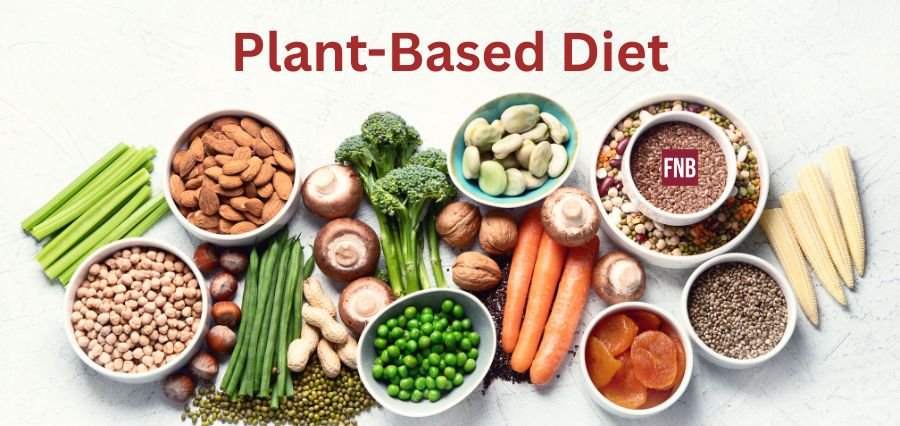The Business of Food Trends
The plant-based and alternative protein industry has seen explosive growth in recent years, driven by increasing consumer demand for more sustainable, ethical and healthier food options. As we look to the future, this sector is poised for continued innovation and expansion. From novel ingredients to advanced manufacturing techniques, the next wave of alternative proteins promises to revolutionize our food systems and eating habits.
Emerging Protein Sources
While soy, wheat and pea proteins have dominated the plant-based market, companies are now exploring a wider array of protein sources to improve taste, texture and nutritional profiles. Emerging options include:
- Algae: Rich in protein and omega-3 fatty acids, algae is a highly sustainable option with a small environmental footprint.
- Mycoprotein: Derived from fungi, mycoprotein offers a meat-like texture and complete protein profile.
- Duckweed: This aquatic plant is protein-dense and grows rapidly, making it a promising sustainable protein source.
- Insects: Though facing cultural barriers in some markets, insect protein is highly nutritious and environmentally friendly.
- Cultured Meat: Lab-grown meat from animal cells could provide a cruelty-free alternative to traditional animal agriculture.
These novel protein sources will likely play an increasing role in future alternative protein products, offering consumers more variety and potentially superior nutritional profiles.
Advanced Manufacturing Techniques
The next generation of alternative proteins will benefit from cutting-edge production methods that enhance texture, flavor and overall quality:
- 3D Printing: This technology allows for the creation of complex, meat-like structures with precise control over texture and composition.
- Shear Cell Technology: This method produces fibrous, meat-like textures through controlled application of heat and mechanical shear forces.
- High-moisture Extrusion: An improved version of traditional extrusion techniques, this process creates more realistic meat analogues.
- Fermentation: Both traditional and precision fermentation techniques are being leveraged to produce proteins, fats and flavor compounds.
These advanced manufacturing methods will enable the creation of more sophisticated plant-based products that better mimic the sensory experience of animal-based foods.
Improved Nutritional Profiles
As the alternative protein market matures, there’s an increasing focus on nutritional optimization. Future products are likely to feature:
- Complete Amino Acid Profiles: By combining complementary plant proteins or through precision fermentation, products will offer more balanced protein nutrition.
- Enhanced Bioavailability: New processing techniques and ingredient combinations will improve the body’s ability to absorb and utilize plant-based nutrients.
- Fortification with Micronutrients: Products will increasingly be fortified with vitamins and minerals typically found in animal products such as vitamin B12, iron and zinc.
- Reduced Antinutrients: Innovative processing methods will help minimize compounds that can interfere with nutrient absorption, such as phytates and lectins.
These nutritional improvements will help address concerns about the healthfulness of plant-based diets and make alternative proteins a more viable option for a wider range of consumers.
Expanding Product Categories
While plant-based burgers and milk alternatives have led the way, the future will see alternative proteins expanding into new product categories:
- Whole-cut Meats: Technologies like 3D printing and mycelium growth will enable the creation of plant-based steaks, chicken breasts and other whole-cut meat analogues.
- Seafood Alternatives: As overfishing concerns grow, expect to see more convincing plant-based and cell-cultured seafood options.
- Egg Replacements: Beyond simple substitutes, we’ll see more versatile egg alternatives suitable for a wide range of culinary applications.
- Cheese Alternatives: Improved fermentation techniques will yield plant-based cheeses with more authentic flavors and melting properties.
- Infant Formula: Plant-based and cell-cultured breast milk alternatives could offer new options for parents and caregivers.
This diversification will make it easier for consumers to adopt plant-based diets across all aspects of their food consumption.
Regulatory Landscape and Labeling
As the alternative protein industry grows, it will face increasing regulatory scrutiny and potential labeling changes:
- Standardized Terminology: Expect more clearly defined guidelines for terms like “plant-based,” “cell-cultured,” and “animal-free.”
- Nutritional Equivalence Standards: Regulators may require alternative proteins to meet certain nutritional benchmarks to be marketed as replacements for animal products.
- Safety Assessments: Novel ingredients and production methods will undergo rigorous safety evaluations before market approval.
- Sustainability Claims: There may be increased regulation around environmental impact claims to prevent greenwashing.
These regulatory developments will help ensure consumer safety and trust in alternative protein products.
Sustainability and Environmental Impact
The next phase of alternative protein development will place an even greater emphasis on sustainability:
- Circular Economy Approaches: Companies will increasingly use byproducts and waste streams as inputs for alternative protein production.
- Localized Production: Smaller-scale, regional production facilities will help reduce transportation emissions and support local economies.
- Water-efficient Crops: Drought-resistant and low-water input protein crops will become more prominent in response to climate change concerns.
- Biodiversity Promotion: Alternative protein producers will explore a wider variety of crop sources to support agricultural biodiversity.
These sustainability initiatives will further cement the environmental advantages of alternative proteins over traditional animal agriculture.
Consumer Acceptance and Market Growth
As alternative proteins continue to improve in quality and expand in variety, consumer acceptance is expected to grow:
- Mainstream Adoption: Alternative proteins will increasingly be seen as a normal part of omnivorous diets, not just for vegetarians and vegans.
- Price Parity: Economies of scale and improved production efficiency will bring alternative protein prices in line with conventional animal products.
- Culinary Integration: Chefs and food service providers will develop more sophisticated ways to incorporate alternative proteins into diverse cuisines.
- Health-focused Marketing: As nutritional profiles improve, alternative proteins will be increasingly marketed for their health benefits.
These factors will contribute to sustained market growth and increased market share for alternative proteins.
Conclusion
The future of plant-based and alternative proteins is bright, with innovations in ingredients, production methods and product categories set to revolutionize the food industry. As these products continue to improve in taste, texture and nutritional value, they will play an increasingly important role in feeding a growing global population sustainably.
While challenges remain, particularly in terms of scalability and consumer acceptance, the trajectory of the alternative protein sector suggests that it will become a cornerstone of the global food system in the coming decades. As we move forward, collaboration between scientists, food technologists, policymakers, and consumers will be crucial in realizing the full potential of this transformative industry.
Read More: Click Here






